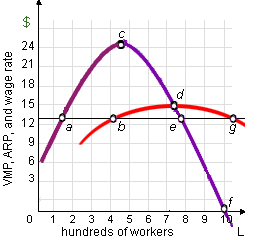When labor was free, in that case this purely competitive firm as in illustrated graph would hire. (1) 600 workers. (2) 700 workers. (3) 800 workers. (4) 900 workers. (5) 1000 workers.

Hello guys I want your advice. Please recommend some views for above Economics problems.